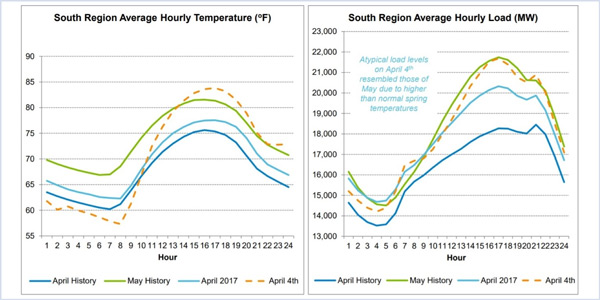By Amanda Durish Cook
Most load-modifying resources called up for the first time in a decade during MISO’s April 4 maximum generation event failed to respond properly to scheduling instructions, officials said last week.
MISO Manager of Resource Adequacy John Harmon said 19 LMRs — demand resources and behind-the-meter generation that provide capacity — responded to meet a maximum scheduling instruction of 715 MW during the emergency in MISO South. Four LMRs failed respond at all and will face penalties under Module E of the RTO’s Tariff.
Harmon said the underperformance by some LMRs was offset by the larger-than-expected load reductions by others. The RTO was short about 25 MW of scheduling instructions in the last hour of the emergency declaration.
He stressed the importance of LMR owners providing accurate load curtailment capability to MISO every day. “It’s important that LMRs update their availability daily in the MISO communication system. Our operators rely on these each day and … are banking on the numbers when the need could arise to shed firm load,” Harmon said at a July 13 Market Subcommittee meeting.
LMRs are only required to be available for emergencies during the summer peak season and do not have to be available during non-summer months. However, the plants must notify MISO when they are unavailable through the RTO’s communication system.
In May, the RTO promised to conduct a performance evaluation of the LMRs during the event. (See “Several Factors in Spring MISO South Maximum Generation Event,” MISO Market Subcommittee Briefs.)
MISO has calculated a total penalty of about $2,000 for the four LMRs that failed to respond. The revenue from the penalties will be allocated to all market participants with load in the Entergy Arkansas local balancing authority, and on a market load ratio share basis to the Entergy New Orleans, Louisiana, Texas and Mississippi LBAs.
The RTO will assess and begin to distribute penalties this week. The generators could avoid punishment if they can identify force majeure reasons that prevented them from responding.
Harmon said MISO will review its approach to training and operations drills to improve LMR performance. It also will review its current process and Tariff to make sure LMRs are “incentivized to update availability each operating day,” he said.
“We saw a lower rate of LMRs being able to meet the load reduction that they said they could meet. That suggests to us that market participants can tighten up the precision of the information that they provide to MISO on a daily basis,” Harmon said.
Executive Director of Market Design Jeff Bladen said there might be a disconnect between what market participants can provide in load curtailment and MISO’s scheduling instructions.
“The issue is when someone tells us that they can drop from 100 MW to 10 MW, and they’re operating at 70 MW and drop to 10 MW, that’s not a 90-MW drop; that’s a 60-MW drop. Whether there’s a penalty or not, we want to operate reliably. It’s not a question of right or wrong, it’s a question of can we operate reliably,” Bladen said.
The April 4 event was driven by unseasonably high temperatures and an unusually high amount of transmission and generation outages in MISO South. It prompted the Independent Market Monitor to call for greater MISO authority in approving maintenance outages. (See MISO South Outages Worry RTO, Monitor.)





